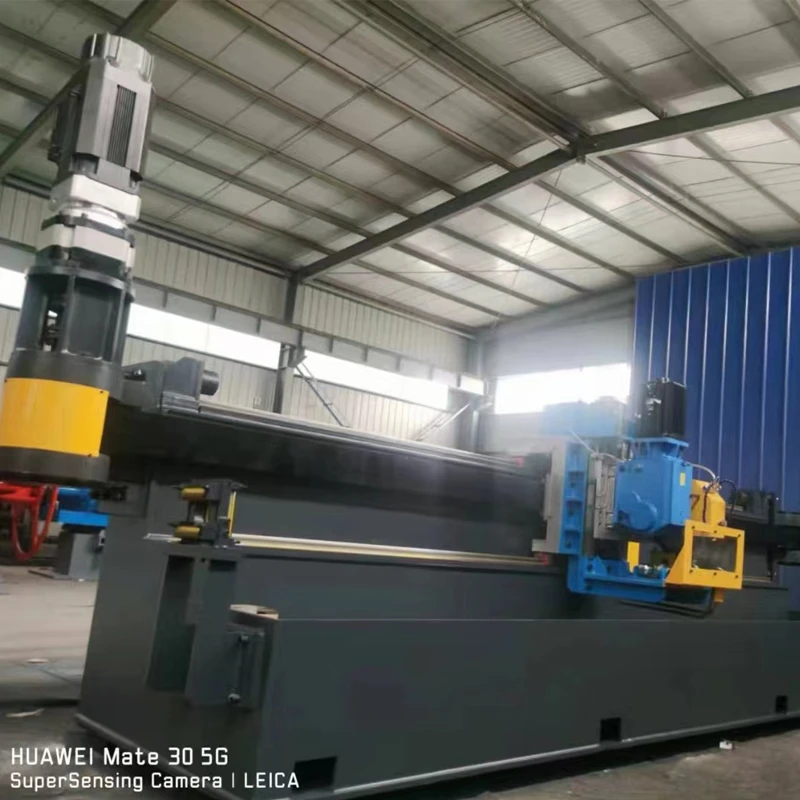Innovative Solutions for Punching and Shearing Machinery in Modern Manufacturing
Punch and Shear Machines Revolutionizing Metal Fabrication
The modern manufacturing landscape is characterized by rapid advancements and innovations, particularly in the field of metal fabrication. Among the essential tools driving these developments are punch and shear machines. These machines play a pivotal role in shaping, cutting, and processing metal sheets, thereby enhancing productivity and precision in various industries, from automotive to aerospace.
Understanding Punch and Shear Machines
Punch and shear machines are specialized equipment designed to perform two primary functions punching and shearing. Punching involves the creation of holes or shapes in a sheet of metal by using a punch that forces through the material. The process is highly efficient, allowing manufacturers to quickly produce parts for assembly. On the other hand, shearing is the process of cutting the metal sheet into specific dimensions or strips without the use of heat.
These machines can vary widely in size, complexity, and capabilities. They can be operated manually or electronically, with advanced models featuring automated systems that can execute multiple operations with minimal human intervention. The integration of computer numerical control (CNC) technologies has further transformed punch and shear machines, allowing for enhanced accuracy and repeatability in manufacturing processes.
Applications in Various Industries
The versatility of punch and shear machines makes them valuable across a range of applications. In the automotive industry, these machines are used for fabricating various components, such as brackets, panels, and housings. The precision and speed of punch and shear processes contribute significantly to the production of lightweight yet durable parts, crucial for modern vehicle design aimed at fuel efficiency and performance.
In the construction sector, punch and shear machines are instrumental in producing metal framing and structural components
. Their ability to create various hole sizes and shapes enables manufacturers to meet specific design requirements, ensuring that structures are both safe and aesthetically pleasing.Additionally, the electronics industry relies on punch and shear machines to create metal casings and components for devices. The need for high precision and intricate designs in electronic manufacturing mandates the use of these advanced machines.
punch and shear machine

Benefits of Using Punch and Shear Machines
The incorporation of punch and shear machines into fabrication processes presents numerous advantages. Firstly, they optimize productivity. By reducing the time required for manual operations and allowing for high-speed processing, manufacturers can significantly increase their output. This efficiency is crucial in keeping up with market demands and reducing lead times.
Secondly, the precision offered by these machines minimizes material wastage. Traditional cutting methods often result in scrap materials; however, punch and shear processes can be designed to maximize material utilization, which is both cost-effective and environmentally friendly.
Furthermore, the ability to produce complex shapes and designs with ease opens new avenues for creativity in product design. This is particularly beneficial in industries where customization plays a vital role, allowing businesses to offer tailored solutions to meet client needs.
Future Trends and Innovations
As technology continues to evolve, so too will punch and shear machines. Future advancements may include the integration of artificial intelligence and machine learning, enabling predictive maintenance and enhancing operational efficiency. Additionally, advancements in materials science could lead to the development of machines capable of processing a broader range of materials, including composites and advanced alloys.
Moreover, the growing emphasis on sustainability within manufacturing means that punch and shear machines will also likely evolve to reduce their environmental impact. This could involve energy-efficient designs or the adoption of processes that minimize waste and enhance recycling capabilities.
Conclusion
Punch and shear machines are undeniably pivotal in modern metal fabrication, offering speed, precision, and versatility across various industries. Their continued evolution promises to enhance manufacturing processes further, making them indispensable tools in the quest for greater efficiency and innovation. As we look to the future, the advancements in these machines will undoubtedly play a significant role in shaping the trajectory of manufacturing in the years to come.
-
High Frequency Straight Seam Welded Pipe Production Line-BzZhou Xinghua Machinery Equipment Manufacturing Co., LTD.|line pipe steel&welded gas pipeNewsJul.30,2025
-
High Frequency Straight Seam Welded Pipe Production Line-BzZhou Xinghua Machinery Equipment Manufacturing Co., LTD.|High Precision&Automated SolutionsNewsJul.30,2025
-
High Frequency Straight Seam Welded Pipe Production Line - BzZhou Xinghua Machinery Equipment Manufacturing Co., Ltd.NewsJul.30,2025
-
High Frequency Straight Seam Welded Pipe Production Line-BzZhou Xinghua Machinery Equipment Manufacturing Co., LTD.|Precision Welding, High EfficiencyNewsJul.30,2025
-
High Frequency Straight Seam Welded Pipe Production Line|BzZhou Xinghua|Precision Welding&EfficiencyNewsJul.30,2025
-
High Frequency Straight Seam Welded Pipe Production Line - BzZhou Xinghua|Precision Engineering&EfficiencyNewsJul.30,2025


